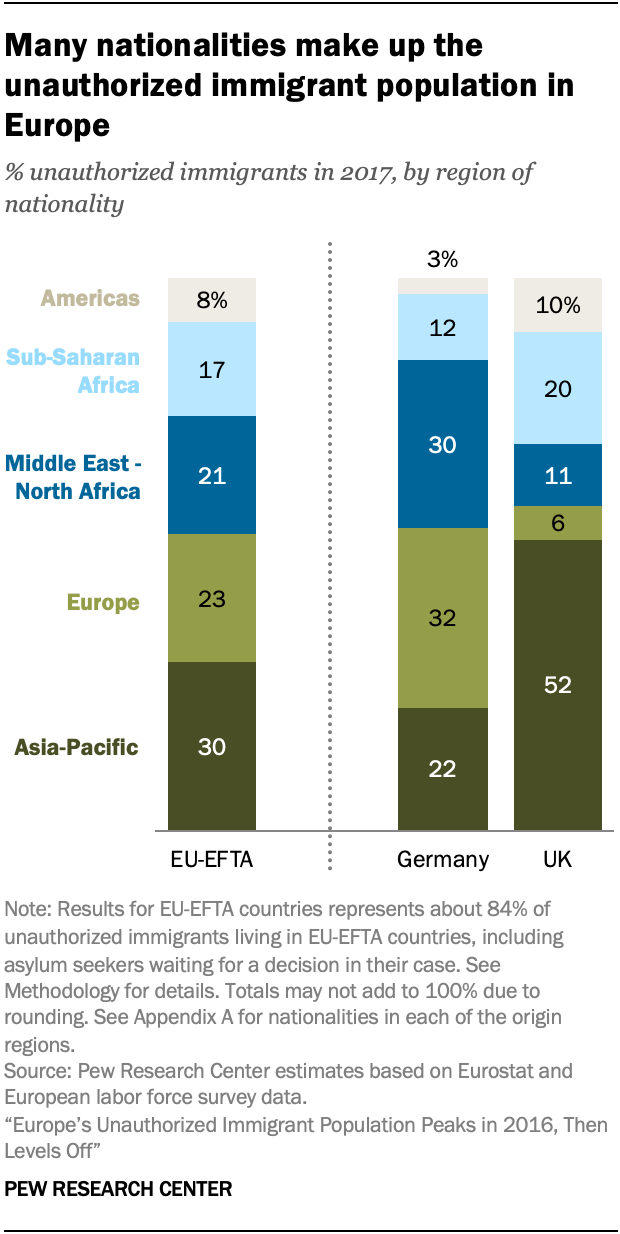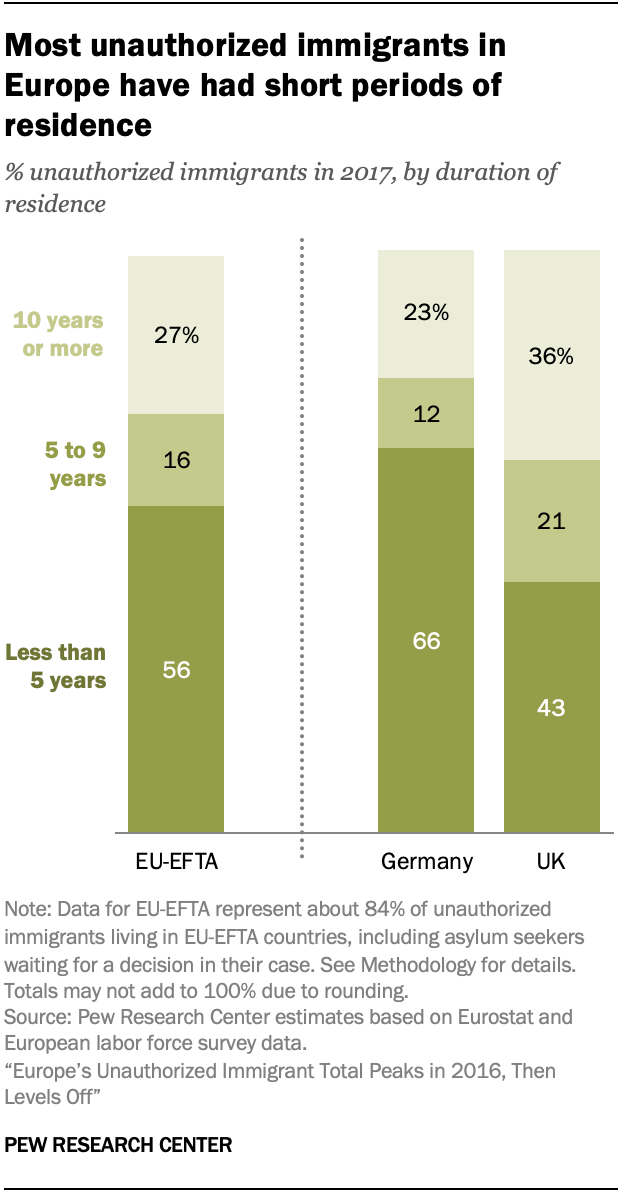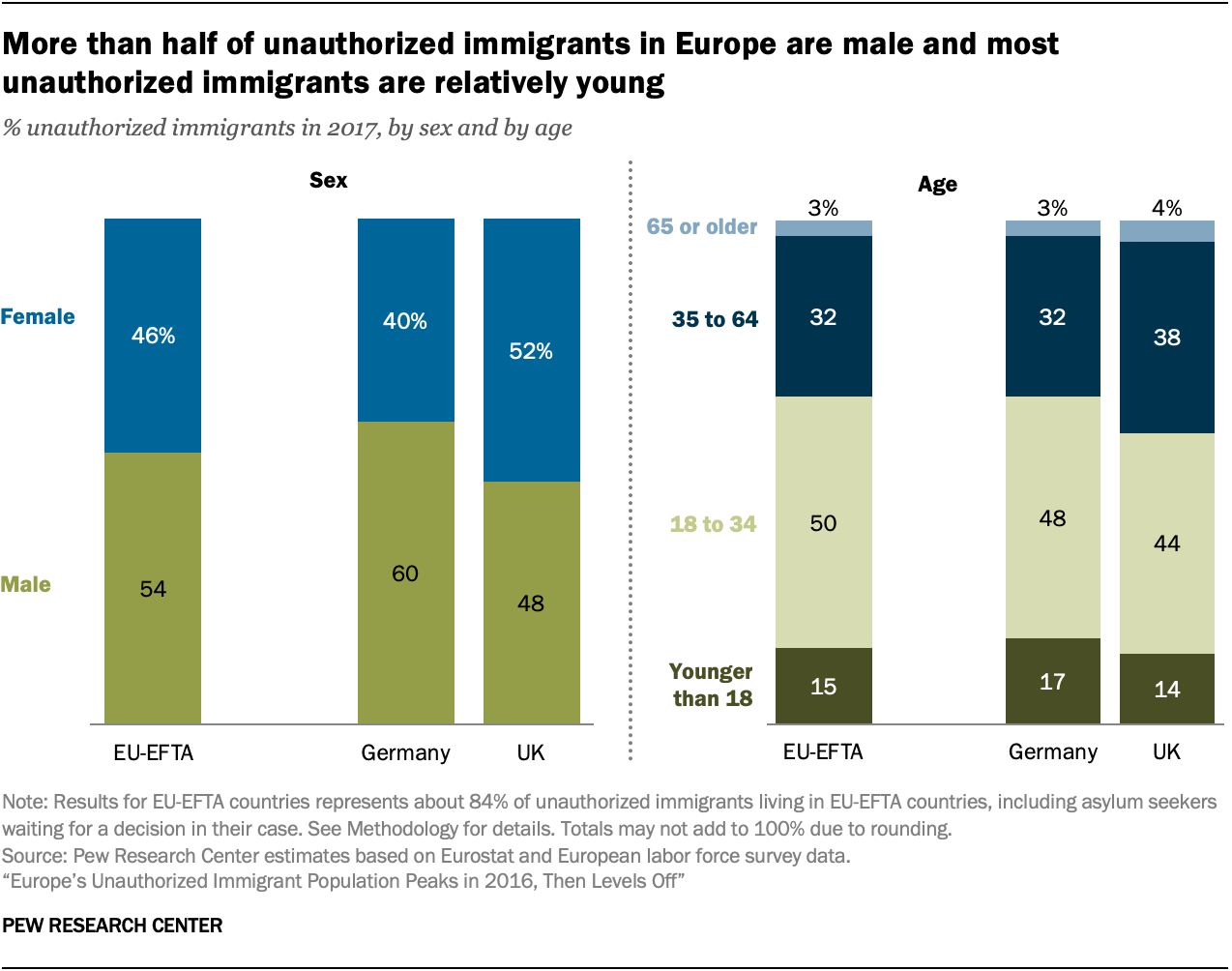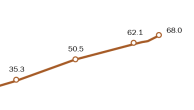Editorial note to readers (March 19, 2025):
This project estimated the number of unauthorized immigrants living in 32 European countries during the mid- to late-2010s. We used what were then the best available data sources from different governments and from the European Union. After our report was published in November 2019, researchers at the University of Oxford’s Migration Observatory identified a problem with the official data from the United Kingdom’s Office for National Statistics (ONS) on the number of legal immigrants residing in the UK.
The ONS data on legal immigrants that we used in our report did not include those with “indefinite leave to remain” (ILR), a group legally residing in the country. Including the ILR group among legal UK residents results in lower estimated total numbers of unauthorized immigrants for both the United Kingdom and Europe in 2017 and other years. The updated estimates for the number of unauthorized immigrants in 2017 (without waiting asylum seekers) are 700,000-900,000 for the UK and 2.8 million-3.5 million for Europe. Updated estimates can be found in this table but are not reflected elsewhere in this report.
Unauthorized immigrants residing in Europe in 2017 were from a diverse set of origin countries, had lived in Europe for a relatively short period of time and were relatively young. More than half were male.
Our estimates of characteristics of unauthorized immigrants in Europe do not cover the entire population because of data limitations, but they represent 84% of Europe’s unauthorized immigrant population – an overwhelming majority of the total. The data on characteristics covers asylum seekers waiting for decisions in all 32 EU-EFTA countries, as well as the unauthorized immigrant populations in 18 of the 32 EU-EFTA countries.3 Additionally, separate estimates were produced for the two countries with the largest unauthorized immigrant populations – Germany and the UK. (See the Methodology for more information on how characteristics of unauthorized immigrants in Europe were estimated.)
The diverse origins of Europe’s unauthorized immigrants

The unauthorized immigrant population of EU and European Free Trade Association countries comes from around the world. Three-in-ten unauthorized immigrants in 2017 were estimated to be from Asia-Pacific countries, including Afghanistan and Pakistan, while an estimated 23% were from European countries outside of the EU and European Free Trade Association, including Russia and Turkey.4 Some 21% were from countries in the Middle East-North Africa region such as Syria and Iraq. Meanwhile, 17% were from sub-Saharan African countries such as Nigeria and Eritrea, and 8% were from countries in the Americas.
In Germany, an estimated third (32%) of unauthorized immigrants in 2017 had European nationalities of non-EU-EFTA countries. Another three-in-ten (30%) were from Middle East-North Africa region countries, and close to a quarter (22%) were from countries in the Asia-Pacific region.
In the UK, about half (52%) of all unauthorized immigrants were estimated to have nationalities from the Asia-Pacific region in 2017, while a fifth (20%) had nationalities from sub-Saharan African countries.
The origins of Europe’s unauthorized immigrants stand in contrast to those of unauthorized immigrants living in the U.S., where the Center has been estimating the characteristics of unauthorized immigrants for many years. There, the overwhelming majority (78%) in 2017 were from only one region, the Americas, with Mexicans alone making up nearly half of all unauthorized immigrants.
Most unauthorized immigrants in Europe have lived there less than five years

In 2017, more than half (56%) of Europe’s unauthorized immigrants are estimated to have lived in their country of residence for less than five years. Almost half of these shorter-term residents were asylum seekers waiting for decisions on their applications.
Another estimated 16% of unauthorized immigrants in Europe in 2017 had lived in their country of residence between five and nine years, while 27% had lived there 10 years or longer.
In Germany, about two-thirds (66%) of unauthorized immigrants had lived in the country for less than five years; many of them were asylum seekers with a pending decision on their application. On the other hand, unauthorized immigrants in UK were more likely to be long-term residents – the majority (57%) had lived there for five years or longer, while 43% had lived there for less than five years.
By comparison, most unauthorized immigrants in the U.S. in 2017 were much more settled, with longer periods of residence. The majority, or about two-thirds (65%), had lived in the U.S. 10 years or longer, 15% for five to nine years, and 20% for less than five years.
More than half of unauthorized immigrants in Europe are male
Men and boys made up a slight majority (54%) of unauthorized immigrants in Europe in 2017. That share was even higher in Germany (60%), while unauthorized immigrants in the UK were about equally male (48%) as female (52%), according to estimates.
Meanwhile, the majority (65%) of Europe’s unauthorized immigrants were younger than 35 in 2017. Similarly, majorities of unauthorized immigrants living in Germany (65%) and the UK (58%) were younger than 35.

By comparison, a slight majority (54%) of unauthorized immigrants in the U.S. in 2017 were also male. But, unlike in Europe, fewer than half (42%) of U.S. unauthorized immigrants were younger than 35. This difference in age reflects both the longer duration of residence of unauthorized immigrants in the U.S. compared with those in Europe and the fact that U.S.-born children of unauthorized immigrants are U.S. citizens, not unauthorized immigrants.5 A larger share of unauthorized immigrants in the U.S. entered the country a decade ago or more, many in their late teens and 20s. By contrast, a young population of asylum seekers entered Europe only a few years ago, and many of them remained part of the unauthorized immigrant population in 2017.




